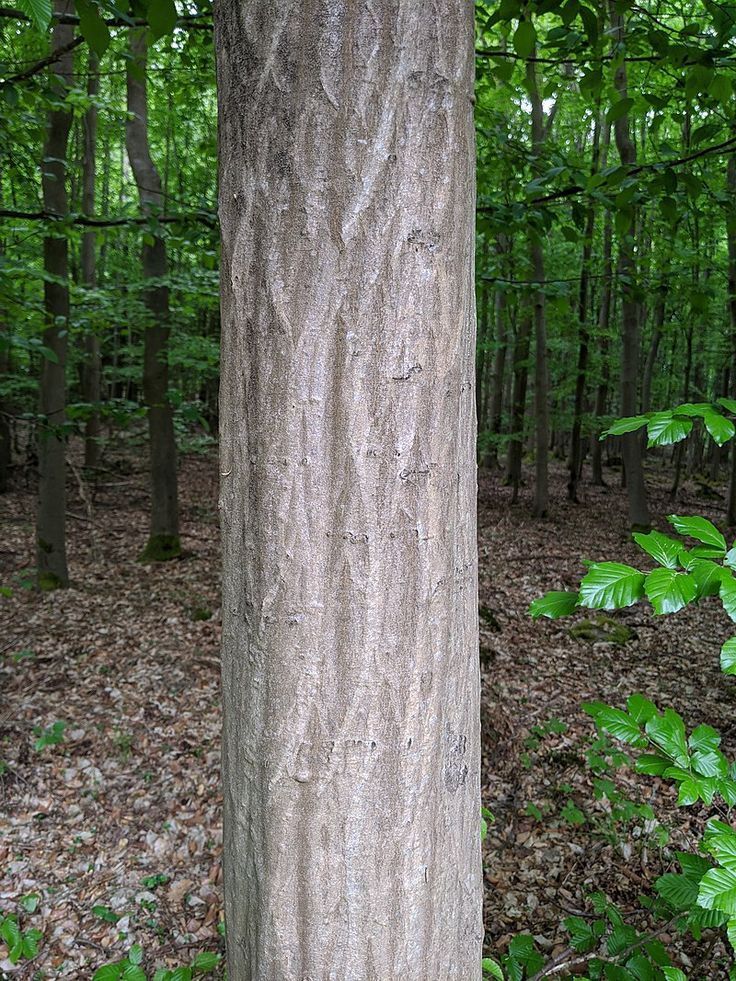The scientific name of this forest species is Carpinus betulus and it belongs to the family Betulaceae, genus Carpinus.
The genus Carpinus encompasses over 25 species of trees and shrubs found in temperate and subtropical regions of Europe, North America, Japan and China. They have smooth bark with ridges appearing in old age, ovate-elliptical leaves and monoecious flowers grouped in catkins. The fruit is a notched achene, topped with traces of perianth and persistent styles at the base of a fruiting involucre generated by the union of two bracteoles with a bract. Species of this genus can also sprout and sucker. They rarely form pure stands and are typically found in mixtures of beech, oak and other deciduous trees.



The hornbeam tree prefers to grow in lowland and hilly areas, in alluvial and typical deciduous forests. In 1996, the hornbeam was awarded the “Tree of the Year” award for its qualities, such as its resistance to freezing temperatures (down to -30℃ ), heat tolerance and easy maintenance. This species is undemanding, thriving and growing in both sun and shade (with a semi-shade temperament), and tolerates most soil types, from acidic to alkaline, as well as sandy and clay soils. It also tolerates high groundwater levels, as well as short-term flooding.
The hornbeam is a native medium-sized species that can live up to 150 years and reach a height of about 20-25 m during its lifetime. Rapidly developing its root system, the hornbeam embeds its roots deep into the soil (the rooting is pivot-transverse, highly branched). The trunk, which can reach a diameter of one meter and sometimes be twisted, is provided with smooth, thin, greyish-green bark with small whitish spots (actually crustacean lichens) and does not form ridges.

The wood hidden under the bark is whitish, hard, compact and heavy. It is considered to be one of the hardest wood species of trees native to Europe. In Old English, hornbeam means “hard tree”. Its wood was valued for its slow burning and good heat transfer and was used in the past for iron smelting as well as for making tool handles.

The leaves are similar to those of beech trees, but differ in that hornbeam leaves are arranged alternately around individual branches, are 5-10 cm long and 3-6 cm wide, and have serrated edges. From spring until mid-October, they are dark green, slightly lighter on the underside, and turn yellowish-golden and brown towards winter.
Flowering begins in April and usually lasts until May. They typically appear in the form of catkins, together with freshly sprouted leaves, and are impressive in appearance. The tree has both male and female flowers, which fertilize each other. The male flowers are yellowish and about 4-7 cm long, while the female flowers are green and more petite. The hornbeam’s fruits, called achenes, are small, about 1 cm, green at first, and turn brown when ripe in October.
Curiosities:
The oldest hornbeam tree was founded in Rheinberg-Orsoy (Wesel), Germany, estimated to be around 463 years old. The tallest tree of the hornbeam species was measured in Kasteel Gaasbeek, Belgium, in 2012, reaching 34,40 meters. In 2002, the largest diameter of a hornbeam tree was recorded in Ware Park, Ware, in southeast England, measuring 6.85 meters.
Source: https://www.monumentaltrees.com/en/trees/commonhornbeam/records/
